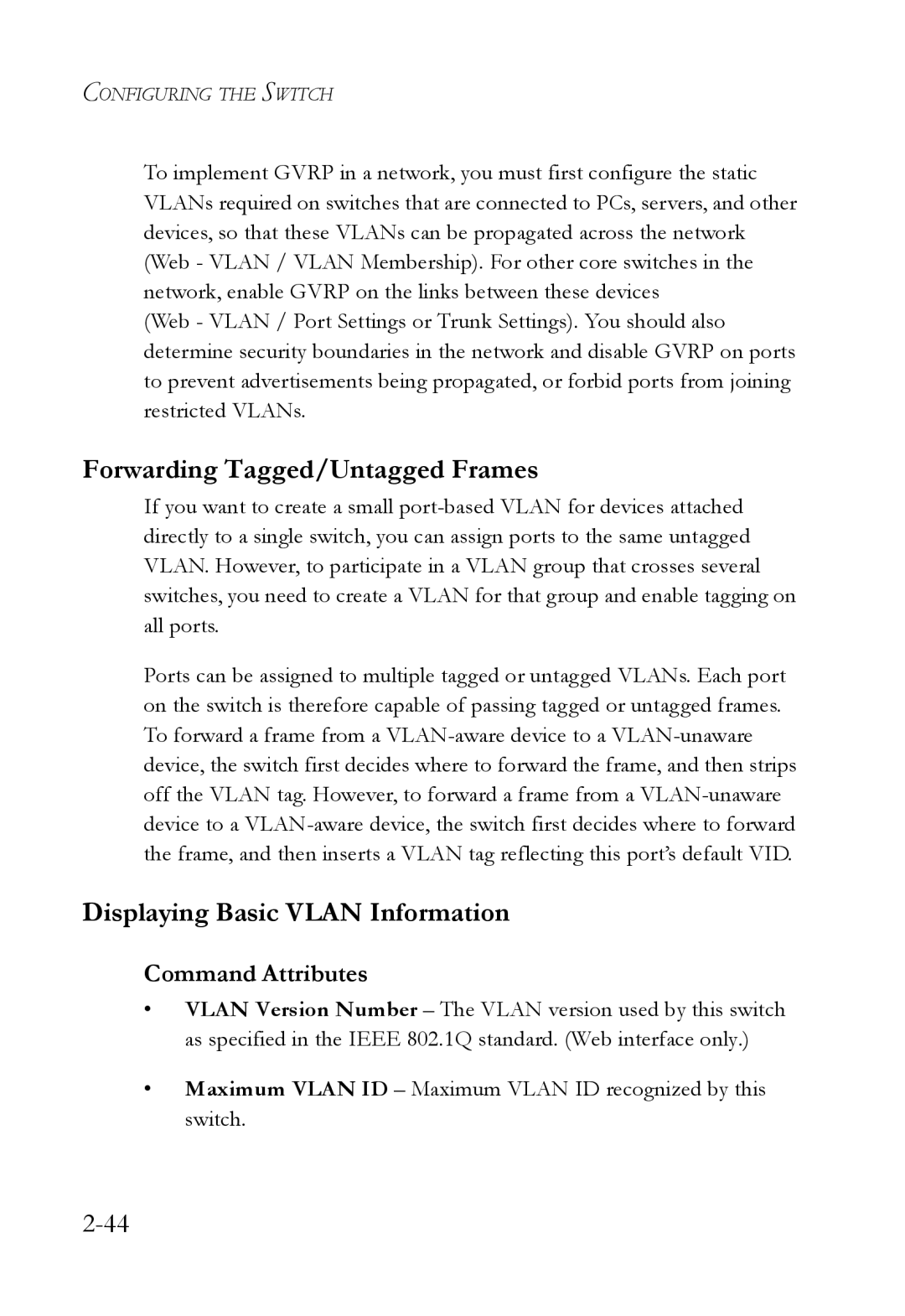CONFIGURING THE SWITCH
To implement GVRP in a network, you must first configure the static VLANs required on switches that are connected to PCs, servers, and other devices, so that these VLANs can be propagated across the network (Web - VLAN / VLAN Membership). For other core switches in the network, enable GVRP on the links between these devices
(Web - VLAN / Port Settings or Trunk Settings). You should also determine security boundaries in the network and disable GVRP on ports to prevent advertisements being propagated, or forbid ports from joining restricted VLANs.
Forwarding Tagged/Untagged Frames
If you want to create a small
Ports can be assigned to multiple tagged or untagged VLANs. Each port on the switch is therefore capable of passing tagged or untagged frames. To forward a frame from a
Displaying Basic VLAN Information
Command Attributes
•VLAN Version Number – The VLAN version used by this switch as specified in the IEEE 802.1Q standard. (Web interface only.)
•Maximum VLAN ID – Maximum VLAN ID recognized by this switch.
